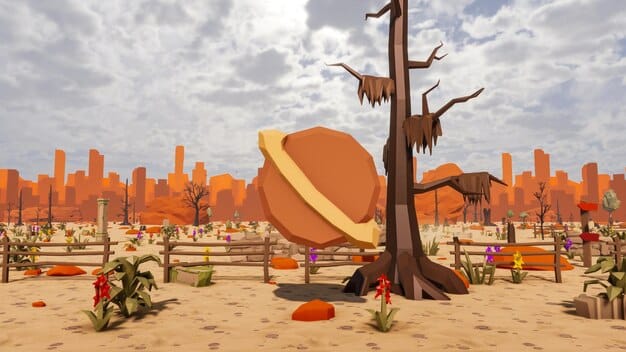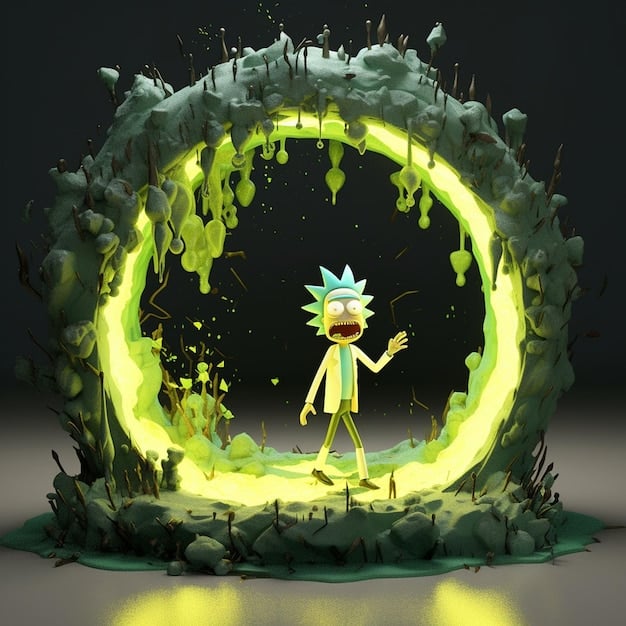The Ultimate Guide to Animated Series: Trends, Classics, and More

Animated series have evolved from simple cartoons to complex narratives that captivate audiences worldwide, reflecting cultural shifts and technological advancements in animation.
Animated series have become a cornerstone of entertainment, captivating audiences of all ages. From timeless classics to cutting-edge productions, the world of animated series offers a vast and diverse landscape to explore.
A Brief History of Animated Series
Animated series have a rich and fascinating history, evolving from simple hand-drawn cartoons to the sophisticated CGI productions we see today. This journey reflects significant advancements in technology and storytelling techniques, shaping the entertainment landscape.
Early Beginnings
The earliest forms of animation were short films designed for theaters. Characters like Felix the Cat and Mickey Mouse pioneered the medium, setting the stage for serialized animated content.
The Golden Age of Animation
The mid-20th century marked a golden age for animation, with studios like Warner Bros. and Hanna-Barbera producing iconic series that continue to resonate with audiences today.
- Looney Tunes: Known for its slapstick humor and memorable characters like Bugs Bunny and Daffy Duck.
- The Flintstones: A groundbreaking prime-time animated sitcom that brought adult themes to Saturday morning cartoons.
- Scooby-Doo, Where Are You!: A mystery-solving series that became a cultural phenomenon, spawning numerous spin-offs and adaptations.

This era laid the foundation for the diverse range of animated series we enjoy today.
The Rise of Anime and Japanese Animation
Anime, or Japanese animation, has carved out a significant niche in the global entertainment market. Its unique storytelling style, intricate character designs, and diverse themes have attracted a massive international following.
Early Anime Pioneers
Series like Astro Boy and Speed Racer introduced anime to Western audiences, paving the way for its widespread popularity.
Genre Diversification in Anime
Anime has expanded into numerous genres, from action-packed adventures to slice-of-life dramas, appealing to a broad spectrum of viewers.
- Dragon Ball Z: An action-adventure series known for its intense battles and powerful characters.
- Sailor Moon: A magical girl anime that revolutionized the genre and empowered female audiences.
- Studio Ghibli Films: While not strictly series, films like Spirited Away and My Neighbor Totoro have greatly influenced anime’s global recognition.
Anime’s rise demonstrates the medium’s capacity for complex narratives and emotional depth.
Modern Animated Series: A New Era
Modern animated series have embraced technological advancements and evolved storytelling techniques, leading to a new era of creative possibilities. These series often tackle complex themes and engage with contemporary social issues.
CGI and Technological Advancements
Computer-generated imagery (CGI) has transformed animation, allowing for more realistic and visually stunning worlds. Series like “Avatar: The Last Airbender” blend traditional animation with CGI to create immersive experiences.
Adult Animation and Complex Themes
Adult animation has gained popularity, addressing mature themes and social commentary. Series such as “Rick and Morty” and “BoJack Horseman” have garnered critical acclaim for their intelligent writing and unconventional humor.

This shift reflects a growing audience seeking more nuanced and thought-provoking content.
The Impact of Streaming Services on Animated Series
Streaming services have revolutionized the distribution and consumption of animated series. Platforms like Netflix, Hulu, and Amazon Prime Video have become significant players in the animation industry, commissioning original content and acquiring international series.
Accessibility and Global Reach
Streaming services have made animated series more accessible to global audiences, breaking down geographical barriers and allowing viewers to discover diverse content.
Original Content and Creative Freedom
Streaming platforms offer creators greater creative freedom, enabling them to experiment with new styles and narratives without the constraints of traditional broadcast television.
- She-Ra and the Princesses of Power: A reboot that reimagined the classic series with diverse characters and inclusive storytelling.
- The Dragon Prince: An epic fantasy adventure praised for its intricate world-building and complex characters.
- Castlevania: A dark fantasy animated series based on the popular video game franchise, known for its mature themes and intense action.
This has led to a surge in high-quality animated series catering to various tastes and demographics.
Animated Series for Children: Education and Entertainment
Animated series for children play a crucial role in education and entertainment, fostering creativity, teaching valuable life lessons, and shaping young minds. These series are designed to be both engaging and informative, making learning fun.
Educational Programming
Many animated series incorporate educational elements, teaching children about science, math, history, and social skills. “Sesame Street” and “The Magic School Bus” are prime examples of educational programming that has influenced multiple generations.
Moral and Ethical Lessons
Animated series often convey important moral and ethical lessons, teaching children about friendship, compassion, honesty, and respect. These lessons help children develop empathy and navigate social situations.
Animated series can inspire and empower children to be their best selves.
The Future of Animated Series: Trends to Watch
The future of animated series is bright, with new technologies and creative talent pushing the boundaries of what’s possible. Several trends are shaping the future of animation, promising exciting developments for audiences worldwide.
Virtual Reality (VR) and Interactive Experiences
VR technology is creating immersive and interactive animated experiences. Viewers can now step into the worlds of their favorite series, interacting with characters and influencing the storyline.
AI-Driven Animation
Artificial intelligence (AI) is being used to streamline the animation process, automating tasks such as character animation and background design. This can reduce production costs and accelerate the creation of animated series.
- Continued Growth of Streaming Platforms: Streaming services will continue to dominate the animation landscape, commissioning original content and expanding their libraries.
- Increased Diversity and Representation: Animated series will increasingly reflect the diversity of the global audience, featuring characters from various cultural backgrounds and addressing social issues.
- Hybrid Animation Techniques: Combining traditional and CGI animation will become more common, creating visually stunning and unique animated experiences.
As technology evolves, animated series will continue to captivate and inspire audiences in new and exciting ways.
Conclusion
Animated series have come a long way since their humble beginnings, evolving into a diverse and influential form of entertainment. From classic cartoons to cutting-edge CGI productions, animated series continue to captivate audiences of all ages, reflecting cultural shifts and technological advancements. As technology evolves and creative talent continues to push the boundaries of what’s possible, the future of animated series promises to be even more exciting.
| Key Point | Brief Description |
|---|---|
| 📺 History of Animation | Traces the evolution from early cartoons to modern CGI productions. |
| 🍥 Anime’s Global Rise | Discusses anime’s unique style and global appeal. |
| 🚀 Streaming Impact | Explores how streaming broadens access and creative freedom. |
| 👶 Children’s Edutainment | Highlights the educational role of animated series. |
FAQ
▼
One of the earliest animated series was “Felix the Cat,” which began in the silent film era and later transitioned to television.
▼
Anime gained popularity through the introduction of series like “Astro Boy” and “Speed Racer,” which paved the way for future hits.
▼
Streaming platforms have increased access, and given creators more freedom, leading to diverse content and global reach for animated series.
▼
Classic series include “Sesame Street” and “The Magic School Bus.” These shows blend education with engaging storytelling.
▼
VR and AI technologies are creating immersive experiences, potentially reducing production times and expanding creative possibilities.
Conclusion
Animated series have evolved significantly, offering diverse narratives and educational content. With emerging technologies and creative freedom, the future promises even more engaging content. From classic cartoons to modern anime, animation continues to impact our culture.





